Institutional Context
Summary
The University of Oxford is the world’s oldest English-speaking university, has been at the forefront of research, scholarship and innovation for over 850 years, and is today a vibrant hub of internationally-leading work spanning all aspects of science, medicine, the social sciences and humanities. Our mission is the advancement of learning by teaching and research, and its dissemination by every means; and our goal is to make a difference at all scales, from the local to the global, influencing technology, policy and culture for the benefit of society. We aim to excel in every knowledge exchange and innovation mechanism to deliver these goals, including activities measured by the KEF metrics and beyond.
https://www.ox.ac.uk/research/recognition/knowledge-exchange-framework-kef
Institutional context
The University of Oxford builds its KE activities on a firm foundation of world-leading research and education. This occurs across our four Divisions – Medical Sciences, Mathematical, Physical and Life Sciences (MPLS), Social Sciences and Humanities – as well as in Continuing Education, and our internationally significant Gardens, Libraries and Museums (GLAM). The extraordinary breadth and depth of our disciplinary expertise enables us to lead the international research and innovation agenda across these fields. We expect our external engagement to make a difference to the economy and society, including globally, and enrich our ongoing research and education through a true exchange of knowledge, skills and ideas. In 2021/22, the University’s total research income of £711.4m included £117.4m from industry, in both cases the highest of any UK institution.
The University’s heritage and impact are an asset for the UK and the world, and our response to the COVID-19 pandemic illustrates the value of our KE mechanisms in allowing the immediate contribution of expertise and assets to the national and international effort. This permanent KE infrastructure has enabled speedy collaboration with industry on the licensing and development of a vaccine, collaboration to create OxVent, city-wide community engagement activities initiated by OxHub and record levels of clinical trial recruitment. Our longstanding relationship with the NHS supports translational work and accelerates patient benefit.
As this multi-faceted response to COVID-19 demonstrates, the University’s scale and level of activity precludes a focus on any one KE perspective over another, requiring instead all available mechanisms.
Although our commercial, policy and social impact is longstanding, the last 35 years have seen significant intentional investment in mechanisms for KE. Oxford University Innovation (OUI) was one of the country’s first technology transfer offices (established 1987) while the Oxford Policy Engagement Network (OPEN) started in 2018. A dedicated support for social enterprises has spun out 17 ventures since 2018.
In 2015 Oxford Science Enterprises plc (OSE) was founded – an independent investment company to found, fund and help build transformational businesses in a unique partnership with the University. In 2019 the BioEscalator became the first business incubator on our medical campus. Oxford’s newest college (Reuben College) established in 2019 identifies core principles of collaboration, innovation and entrepreneurship.
Investment across the University has improved embedded KE support for academic activity in a way that reflects the opportunities presented by different disciplines. This includes Humanities KE fellowships, the development of Industrial Relationship teams in Medical Sciences and MPLS and a Public Engagement with Research (PER) network acknowledged as leading. We develop, promote and sustain wider, cross-disciplinary networks, such as the University’s ONE Network, TORCH and the Oxford Martin School, which share a commitment to mobilising interdisciplinary research expertise for the benefit of wider communities, locally and globally.
Oxfordshire is a leading international centre of research and technological innovation, and the University is both anchor and leader in a vibrant, innovative regional economy to which it makes an enormous contribution, attracting significant investment and expertise to the region and supporting local innovation and entrepreneurial networks, including through our Entrepreneurship Hub.
https://www.ox.ac.uk/research/recognition/knowledge-exchange-framework-kef
For further information, please send queries to collaboration@admin.ox.ac.uk
Local Growth and Regeneration
Summary of approach
Oxford University contributes to Local Growth and Regeneration (LGR) through working in partnership with regional, pan-regional, national, and global stakeholders. Together, we co-develop strategies that address regional needs, identify activities and opportunities for socio-economic gain, and we deliver tangible results.
Our researchers, students, and professional staff work with regional partners developing activities e.g. advancing Net-Zero, increasing innovation space, commercialising research, strategy development, entrepreneurship, and identifying funding for inclusive growth. We also create and invest in spin-out/start-ups which create jobs and attract investment.
We are accelerating the pace at which we deliver these activities to expand the impact in the Oxfordshire innovation ecosystem. Therefore, ‘Region and Place’ is a key theme in our Knowledge Exchange Strategy1.
Aspect 1: Strategy
The primary settings for Oxford University’s LGR activities are the City of Oxford and Oxfordshire. However, our activities and their impact extend to the Oxford-Cambridge & Northamptonshire pan-region, other UK regions, and the globe.
The University has shaped the local economy and culture for over eight hundred years, but the pace of institutional support and involvement has been accelerating for over sixty years. Ten years ago, our staff, researchers, and entrepreneurs began to play a direct role in the understanding of the strengths, the challenges, and the needs of the region with the aim of creating a flourishing innovation ecosystem, so we commissioned the Oxfordshire Innovation Engine(2013)2 with OxLEP3 and Science Oxford.4
Advancing these ends, our Strategic plan (2018-24)5 seeks to “benefit society on a local, regional, national and global scale.” It addresses LGR through:
Building strong and constructive relationships with our local and regional community.
Engaging with businesses, the public and policy makers to encourage maximal use of our research findings and expertise.
Working with partners to create a world-class regional innovation ecosystem.
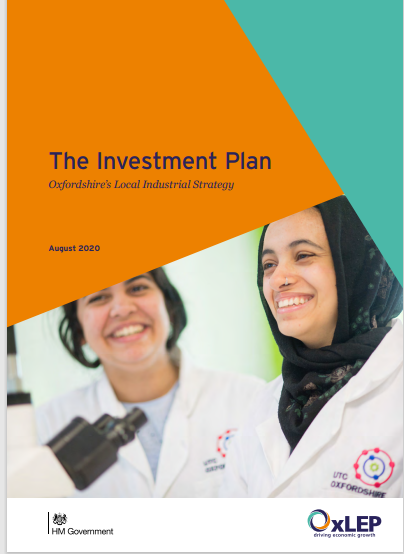
Prior to these, our researchers and KE staff were instrumental in co-developing a suite of influential strategies and policy papers e.g. the Oxfordshire Local Industrial Strategy8 (LIS), the Basic Economic Review, the Future State of Oxfordshire Economy9 the Oxfordshire Science and Innovation Audit10 the Oxfordshire Innovation Strategy,11 and OxLEP strategies for Energy12 Skills13, Heritage and Tourism.14 In addition, we have established new partnerships for collaboration including Smart Oxford15, Living Oxford, and Oxfordshire Social Enterprise Partnership (OSEP).16
These documents and activities are our tools for understanding the region’s needs, its economy, and for shaping the development and delivery of collective funding programmes e.g. Local Growth Funds (LGF), the European Regional Development Funds (ERDF), and the Get Building Fund. They have also been instrumental in our efforts to generate venture capital, and attract investment e.g. MoA (Modes of Action) Technology Ltd17, a spin-out company developed from an LGF project via OxLEP raised $44m Series B funds (see Aspect 3).
Working with OxLEP, we are now co-developing the next iteration of the Oxfordshire Strategic Economic Plan (SEP). This will take stock of the County’s socio-economic challenges in the context of local and national issues e.g. the pandemic, the cost of living, and the energy crisis, while highlighting the County’s progress and potential in science and innovation. It will provide a framework for responding to regional challenges e.g. the growing importance of social inclusion, the need to build a resilient Net-Zero economy that is responsive to short-term economic shocks, and long-term demographics and the need to encourage progression, particularly in relation to younger people. Partners include; all Local Authorities, key business partners, Harwell Campus, Culham and Innovation Centres.
We also work closely with voluntary and commercial organisations e.g. Oxford Hub,18 OSEP,19 and the Oxfordshire Inclusive Economy Partnership (OIEP). Thus, socio-economic gains are at the heart of our work.
Our research and knowledge exchange activities extend to the emerging Oxford to Cambridge Pan Regional Partnership20, which has recently attracted £2.5m in government funding. The partnership includes seven universities i.e. (Cambridge, Cranfield, the Open University, Oxford Brookes, Bedfordshire, Northamptonshire, and Anglia Ruskin), plus business leaders and local authorities. Our academics will lead on sustainable aerospace and life sciences.
Finally, Oxford’s vision is to be a key player in a globally significant innovation ecosystem through impactful research and innovation e.g. the Covid vaccine.
Therefore, we identify our LGR geographies and needs through partnership working, and direct involvement in the production, implementation and progress monitoring of Oxfordshire’s strategies, action plans and policy papers. We also invest directly in projects which contribute to Oxfordshire’s LGR through our Strategic Innovation Fund, and Innovation District development initiatives (see Aspect 3). Our research outputs, spinout, and entrepreneurial activities then extend our impact to the pan-regional, national and global spheres.
Aspect 2: Activity
Our approach to LGR work is built on direct engagement and involvement by University senior leadership, researchers, students, and professional staff in local initiatives, projects, networks and regional partnerships. Our Pro-Vice-Chancellor (PVC - Research) sits on the Board of OxLEP, the PVC-Innovation sat on the innovation sub-group until its dissolution, and the Principal of Somerville College is Co-Chair of the OIEP, which recently published the Inclusive Economy Charter21.
We have a jointly appointed senior officer with OxLEP, and they work exclusively on the regional growth and regeneration agenda while our researchers and KE staff are directly involved in the production, implementation and progress monitoring of Oxfordshire’s various strategies, action plans and policy papers (see Aspect 1). This approach informs our understanding of the region’s economy and it allows us to continuously assess whether we are meeting the identified needs of the regions or not.
Our University Innovation Districts co-locate organisations and activities close to the fundamental research base, increasing the breadth and depth of collaboration with industry, partnerships and innovation. We have increased space for co-location and co-working with businesses, providing incubation spaces for newly incorporated spin outs and fast growth companies adjacent to the University’s entrepreneurial academics, innovation networks and research activities.
We work closely with a range of local stakeholders to develop and transfer knowledge for the energy transition. Activities include major roles in two of the UK’s three Large-scale Energy System Demonstrators (Local Energy Oxfordshire and Energy Superhub Oxford) and a range of innovative Electric Vehicle (EV) charging projects (including the Park and Charge project).
In June 2022 we began piloting The Energy Systems Accelerator (TESA), testing methods for collaborative innovation and helping design a full-scale TESA that will underpin development of the Osney Mead innovation district, a city centre site and part of the City’s local plan for development for the West End. This pilots one of the core projects of the Local Industrial Strategy, using OxLEP Get Building Funds.
A second district, (Oxford East), is increasing innovation activity around the University’s medical campus. This began with the LGF-funded Bio-Escalator22, which nurtures and incubates start-up biomedical companies adjacent to the University’s world-class medical research.
The formation of Oxford University Development, a £4bn partnership with Legal & General, is advancing the development of affordable staff and student housing co-located with the science and innovation districts in and around Oxford, including Begbroke Science Park (the third innovation district), and Osney Mead.
Our programme of impact and knowledge exchange enhances our researchers’ and students’ capacity to deliver local impact through involvement in regional projects e.g.
inspiring girls into STEM entrepreneurship through the Creative Destruction Lab23
engaging with the policy making community locally, nationally and internationally
student entrepreneurship via the University’s new Entrepreneurship Hub
social enterprise by supporting the Oxford Hub, OSEP, and a dedicated team for social spin-outs at OUI.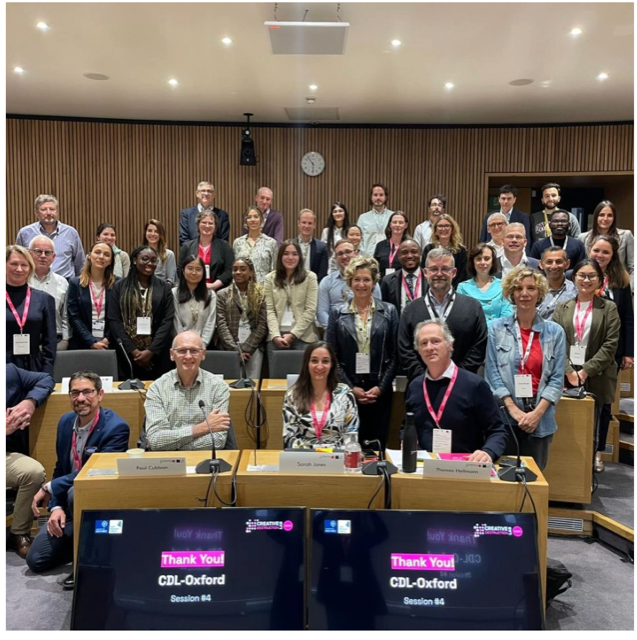
This support (alongside that of regional partners), is brought together in Enterprising Oxford, the University’s source of practical information, resources, and events available for all regional entrepreneurs.
We collaborate with individual partner organisations to provide and facilitate access to:
Skills development e.g. mentorships, professional development and executive education, internships, work placement and entrepreneurship training for students
Equipment, e.g. The “Agile Lab”24, a shared working facility, comprising an equipped laboratory with bookable bench space, equipment, and office space.
Research collaborations e.g. that between Blenheim Palace25 and the University around heritage, archaeology, forestry, the environment, sustainability, autonomous vehicles and energy.
Research and Innovation Centres focus on a topic of interest to a group of businesses bringing together expertise from the research, public and private sector to tackle sector-wide problems.
Centre for Applied Superconductivity (CfAS), an initiative driven by regional and University expertise in superconductivity. Funded by LGF it provides experimental and testing facilities bringing together local industrial partners, research centres and the University. The centre delivers research identified by industry partners as crucial to their future product development.
Tangible results from these activities are now emerging as is outlined in Aspect 3.
Aspect 3: Results

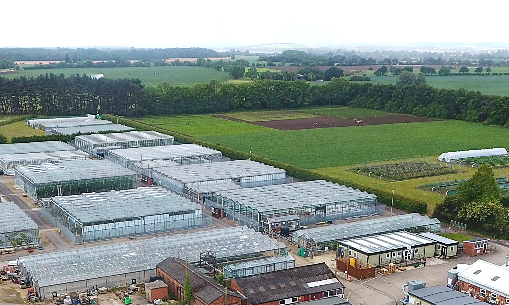 The impact of our research,
innovation and regional partnership activities is measurable and
tangible. The Oxford Centre for Plant Science
Innovation, a joint initiative with OxLEP, funded through £1.9m
of regional growth plus the University’s own funds, has now created two
spin-out companies. The first, Wild Bio based in Abingdon
Oxfordshire currently employs 20 people. This potential high-growth
company was featured in the Financial Times ‘The big Read,’ The
UK’s dream of becoming a ‘science superpower.’
The impact of our research,
innovation and regional partnership activities is measurable and
tangible. The Oxford Centre for Plant Science
Innovation, a joint initiative with OxLEP, funded through £1.9m
of regional growth plus the University’s own funds, has now created two
spin-out companies. The first, Wild Bio based in Abingdon
Oxfordshire currently employs 20 people. This potential high-growth
company was featured in the Financial Times ‘The big Read,’ The
UK’s dream of becoming a ‘science superpower.’
The second, MoA (Modes of Action) Technology, conducts the first systematic empirical search for new herbicides through three distinct discovery platforms. Based in Oxford Science Park, it employs 55 people, aiming to increase to 75 in 2023. In 2022, MoA Technology opened an R&D facility at Stockbridge Technology Centre (STC) at Cawood, near Leeds and York. The site is developing promising lead candidates flowing from the high throughput screening platforms at the Oxford headquarters.
The company has since raised $44m of Series B funding. This is a prime example of how regional collaborations with partners like OxLEP supports multiple objectives e.g. research excellence, commercialisation, innovation, job creation, and supports the government levelling-up ambitions. It also showcases Oxford’s potential as a UK innovation engine.
The Oxford University Science Park at Begbroke will double its lettable floor area with two new research and innovation buildings to be completed in 2024 and 2025, delivering 500 jobs.
The Bio-Escalator was fully occupied within months of opening and has been operating at capacity since, prompting plans for a second facility. Over 30 companies have been supported in the Bio-Escalator, and to date (February 2023), they have attracted over £1.6bn of funding and investment creating over 260 jobs. TESA now co-locates 100 people from academic research, a networks supplier, the council, and businesses with the aims of creating a super energy systems cluster, and accelerating innovation.
Our commitment to innovation is not solely about scientific endeavour. We also aim to support cultural growth and regeneration in the City, as is evidenced in the Stephen A. Schwarzman Centre, planned to open in 2024/25, through a £150m benefaction. This will form a key part of Oxford’s cultural district and will include an acoustic ‘Black Box’ 100-seat lab for experimental performance. This will anchor the growth of cultural corridors and complement the region’s strong tourism and hospitality sector.
In July 2021, we set up the £2.5m p.a. Strategic Innovation Fund (SIF) using proceeds from Oxford OUI. A key aim of the fund is to grow ideas into proposals that attract investment into the region or expand the impact of innovations and initiatives.
The SIF has since awarded over £1.6m to the following ‘region-active’ projects, and calls for applications are ongoing.
Accelerating the Eastern Innovation District masterplan (awarded £105k)
Options for innovation space expansion (£95k)
Pan-Region Space, and AI cluster development (£267k)
Increasing diversity in entrepreneurship activities (£240k)
Kickstarting Heritage innovations with Blenheim Palace (£127k)
Pan region life sciences strategy (£99k), innovation ecosystem development conference (£77k)
Developing and Imagining immersive innovation in humanities with a local SME (£121k)
Conversational learning (£120k)
Revolutionising reading (£123k)
Accelerating drug development for rare diseases (£99k)
Establishing a community history programme (£120k).
These projects will contribute to our LGR through; special partnerships, pan-region cluster development, promoting diversity and inclusion, involving the public in novel research methods (e.g. Community history), innovation district development and interdisciplinary innovation.
This shows how we ‘act’ on the results of our commercial activities (e.g. financial proceeds) by reinvesting in the pan-region to stimulate further activity and results.

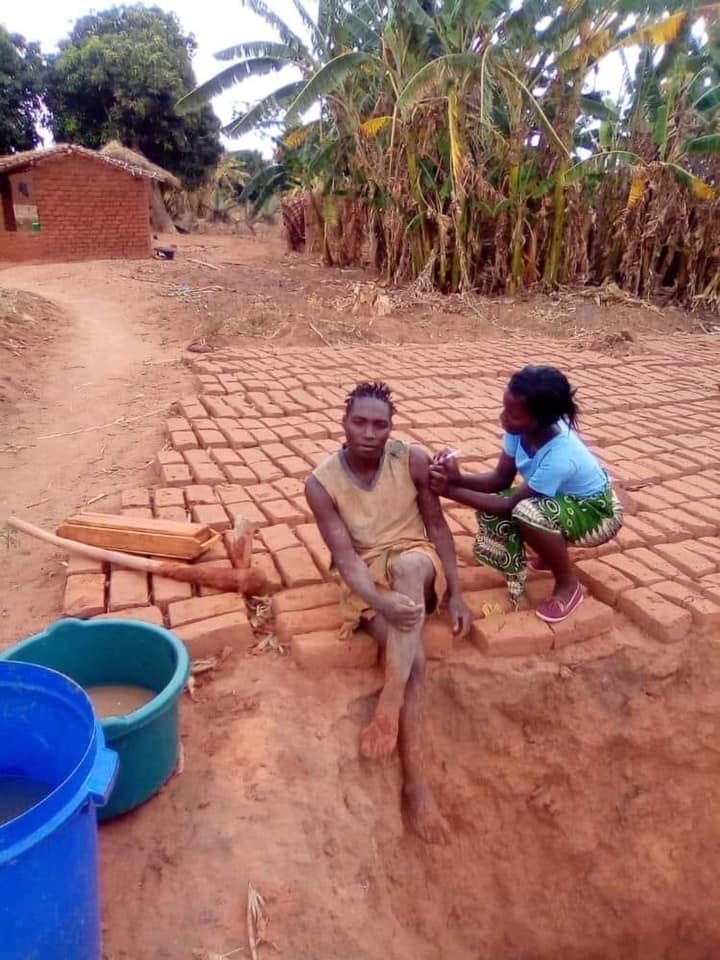 The impact of our activities
is also global. Three billion doses of our Covid vaccine were available
for use in 183 countries around the world. Estimates are that the our
vaccine26 saved 6.3million lives in the first
year of the global vaccine roll out, and this was supported by our
commitment to provide the vaccine at cost to low income countries. This
highlights the scale of the diffusion of our innovations, reaching even
the least resourced regions of the world.
The impact of our activities
is also global. Three billion doses of our Covid vaccine were available
for use in 183 countries around the world. Estimates are that the our
vaccine26 saved 6.3million lives in the first
year of the global vaccine roll out, and this was supported by our
commitment to provide the vaccine at cost to low income countries. This
highlights the scale of the diffusion of our innovations, reaching even
the least resourced regions of the world.
Our commercial arm, OUI, has spun-out 90 more companies since our last LGR narrative. This brings the total of Oxford University spin-outs to 290, the highest of any UK university. This community of companies includes academic-led spinouts, alumni-focused start-ups and impact-driven social enterprises. These spin-outs attracted billions in investment, and created thousands of local, national and international jobs:
£3.5bn has been invested into Oxford companies between 2020 and 2022, setting a new and remarkable benchmark
Several companies have listed over the past three years e.g. Oxford Nanopore, Summit Therapeutics, Pepgen, and Vaccitech. Vaccitech was involved in the development of the vaccine.
In 2021 Yasa Motors was acquired for £11m by Mercedes-Benz to lead their electric motor development for electric vehicles. Yasa Motors has continued to thrive and is opening new offices across Oxfordshire.
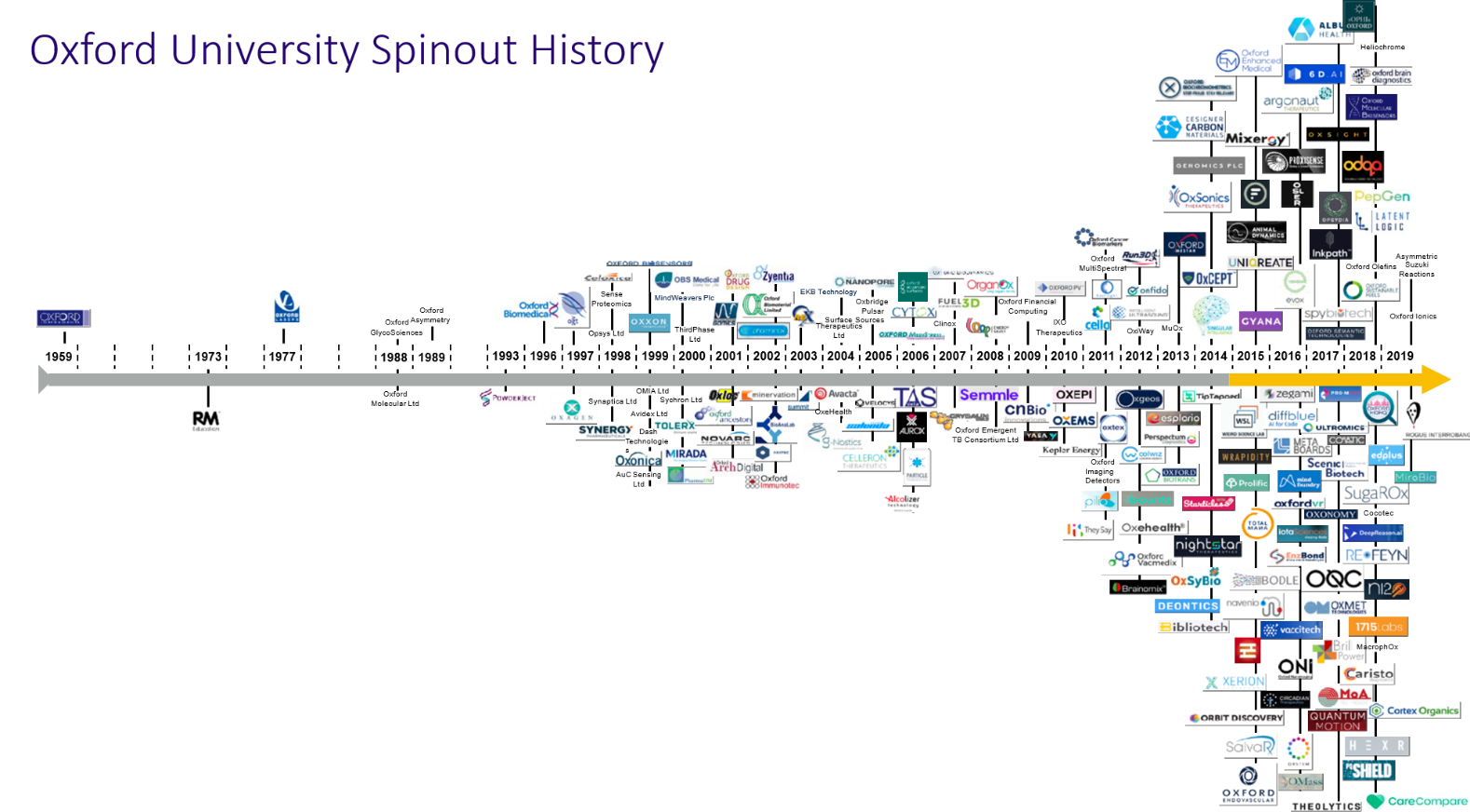
We communicate our results through a range of University and stakeholder channels and networks including online and social media. We have also specifically appointed an innovation communications manager to coordinate and support these activities through direct engagement in local networks.
Therefore, tangible results from our activities include: creation of local companies, jobs, scale-up of innovations, strong partnerships and collaborations, and diffusion of the benefits to neighbouring, national and global regions. We are delivering on our ambition to be the heart of a global knowledge and innovation ecosystem, using our world-class research base, outstanding networks and strong convening power in the dynamic exchange of knowledge for social, cultural and economic benefit to all our regions. Our plan is to consolidate our activities and accelerate the impact of these results and outcomes
Public & Community Engagement
Summary of approach
The University of Oxford’s mission is to facilitate excellence in research, teaching, engagement and innovation to realise beneficial outcomes for society at a local, regional, national and global scale. The University has an outstanding reputation for its research and teaching and our aim is also to become a leader in engagement. Core to our approach is partnership working between the University’s Academic Divisions; Research Services; Gardens, Libraries and Museums; and external organisations to support staff and students to value, lead and participate in public and community engagement. We provide engagement opportunities, funding, enabling reward and recognition, training, and fostering networks and partnerships. There is a flourishing ongoing programme of high-quality and impactful public and community engagement.
https://www.ox.ac.uk/research/knowledge-exchange-framework-kef
Aspect 1: Strategy
Public Engagement with Research (PER) and Knowledge Exchange (KE) are explicit commitments within the Engagement and partnership theme of the University's Strategic Plan 2018-24. Both PER and KE are underpinned by separate strategies, running to 2021 and 2025, respectively. As set out in our current PER strategy, “our vision is to embed high-quality and innovative public engagement as an integral part of research culture and practice at Oxford, enhancing our position as a world-leading research institution”.
The PER strategy was developed through widespread consultation and endorsed by the University Council and the leadership team, including the VC and Pro-VCs. Further, there has been an Academic Champion for PER since 2015. However, Oxford is a large, complex and devolved institution (Figure 1), and institutional strategies provide high levels of direction that are contextualised and underpinned by Divisional and Departmental strategies. Thus, across the four research Divisions and the Gardens, Libraries and Museums (GLAM), there are senior professional services staff with responsibility for PCER.

Figure 1 PCER Governance at the University of Oxford. Support for and oversight of public engagement is complex given Oxford’s devolved structure. Each Research Division has an individual with responsibility for PCER, typically with a team to support their work (Divisional PCER teams are not shown due to space limitations). The central PCER team provides the institutional strategy and high-level support for PCER but is not responsible for activity within the Divisions or GLAM. A PCER Advisory Board (PCER AB) provides strategic guidance for the PCER team and is comprised of academic and professional services staff.
Since these strategies were published, we have expanded our work to include community. This was reflected in the recruitment of a new head of Public and Community Engagement with Research in April 2022 and a Community Engagement Coordinator (January 2023). Further, Oxford’s new Vice Chancellor has made an explicit commitment to improving our community engagement. Thus, now is a time of change for the University’s thinking and approach to engagement. We will listen to and work with our communities as we refresh our PCER strategy. We will also benefit from the guidance of a new PCER Advisory Board, comprised of senior academic and professional services staff from across the University.
Oxford has made significant investment in engagement, including capital build (e.g., Schwarzman Centre for the Humanities; Reuben College; Museums’ Collections Teaching and Research Centre) and funding for engagement culture change, programmes and activities. These are resourced via internal and external funding sources, including UK and international research funders, arts and cultural funders, and philanthropic donations.
Our goal is to build on the many years of engagement and enhance the breadth, depth and quality of current and future engagement in the following areas:
public and community engagement with research, including patient and public involvement;
public engagement (PE);
social innovation and entrepreneurship.
Our main ways of working are:
facilitating opportunities for purposeful1 engagement;
equipping staff and students with the skills and resources to do engagement;
building and fostering relationships with communities and partners;
demonstrating engagement leadership, and recognising and rewarding excellent engagement;
evaluating our work, with a focus on continuous improvement.
Aspect 2: Support
Capacity building
A well-established programme of opportunities equips researchers, professional services staff and students with the knowledge, skills, resources and networks to deliver high-quality engagement; e.g.:
The University PER Conferences (502 staff, student and external delegates to date).
Diverse PER training; e.g., the science Divisions (MPLS and MSD) have upskilled nearly 800 staff and students. This includes a cohort of DPhil students working in machine learning and autonomous machines and systems who received a bespoke programme in 2021/22, enabling them to engage with 300+ people at local community events.

Figure 2 MPLS researchers at a facilitated training session
External provision e.g., online engagement skills for social scientists.
The Oxford Research Centre in the Humanities (TORCH), which has channelled significant investment into culture change and support for Humanities research engagement, innovation and impact; 4,000 researchers have reached over 700k people per year, in person and online, to date.
Networks to foster relationships and broker partnerships e.g. the MSD PE Network; GLAM Public Engagement Committee; and TORCH’s research engagement community, which includes internal and external colleagues and partners.
The PCER Culture Change Fund support departments to embed PCER.
Online and printed best practice engagement guidance and resources, including animations (over 5k views) and filmed case studies.
A public engagement facilitators network (PEFN) was established in 2021, while the University’s Research & Innovation Support Network (RISN) includes communities of practice focused on Engagement and Impact, and Research Culture. All enable academic and professional services staff across the university to share knowledge and best practice.
Funding
There are many internal grants schemes to support engagement, for example:
the University’s PCER Seed Fund;
Wellcome-funded Enriching Engagement scheme;
Social Sciences’ Engagement Fellowships scheme for researchers to partner with public-facing organisations and PCER activity is supported through the ESRC Impact Acceleration Account grants;
Community Enterprise Awards fund student and staff projects working in collaboration with Oxfordshire communities;
TORCH provides internal funding for the Humanities and multidisciplinary research engagement, supporting research networks, international collaboration, PCER, KE and PE;
Humanities has supported over 70 KE Fellowships since 2013;
engagement facilitators also work with researchers in embedding and resourcing engagement into external grant proposals;
our Wellcome Centres each have an integrated PE programme.
Reward and recognition
Engagement is rewarded and recognised is several ways, including the Vice-Chancellor’s Innovation & Engagement Awards, and Division-specific impact awards.
Oxford’s highly sought-after ‘Recognition of Distinction’ confers the title of Professor and the criteria includes the influence of the research activity through engagement.
Oxford has signed up to the San Francisco Declaration of Research Assessment (DORA) which includes research assessment on the difference made beyond academia.
Support for engaging with our communities
The University engages and works in partnership with, and provides funding for and in-kind support to, external organisations including cultural organisations, groups and individuals; e.g., through our small community grants.
The ongoing opportunities for our researchers and communities to engage with each other include:
regular events organised by GLAM including in-reach and outreach, and co-creation of events and exhibitions;
online engagement via Oxford Sparks, Oxplore and I’m a Researcher.
Aspect 3: Activity
The University makes a major contribution to the educational, social and cultural life of communities in Oxfordshire, nationally and overseas. Between August 2019 – July 2022, over 46.7 million4 adults, young people and children from a diverse range of demographics engaged in myriad exhibitions, community workshops, online engagement, schools activities, interactive theatre experiences and debates, and more.
Wherever possible we involve the public and communities with the design, conduct and dissemination of research; e.g.:
Meat Your Persona is a touring installation getting the UK talking about eating meat, its environmental impact, and how much meat is good for you. Drawing on research from LEAP (Livestock Environment and People), the installation launched with Meat the Future, which presented cutting-edge research on the environmental and health impacts of eating meat.

Figure 3 Meat Your Persona: The National Tour
Parenting for Lifelong Health is helping to reduce violence against children through evidence-based parenting resources. Launched during the COVID-19 pandemic, the resources comprise playful parenting tips in over 100 languages and have reached more than 200m people globally.

Figure 4 Parenting for Lifelong Health for Young Children in Thailand
Science Together: Oxford Researchers and Communities (STORC) was devised by MPLS and delivered in partnership with MSD, Research Services and Oxford Brookes. It supports local community organisations to collaborate with researchers to overcome challenges. 15 Oxfordshire organisations and initiatives have participated to date, involving over 50 researchers from across all Divisions. The 2021/22 programme engaged over 800 members of the public.
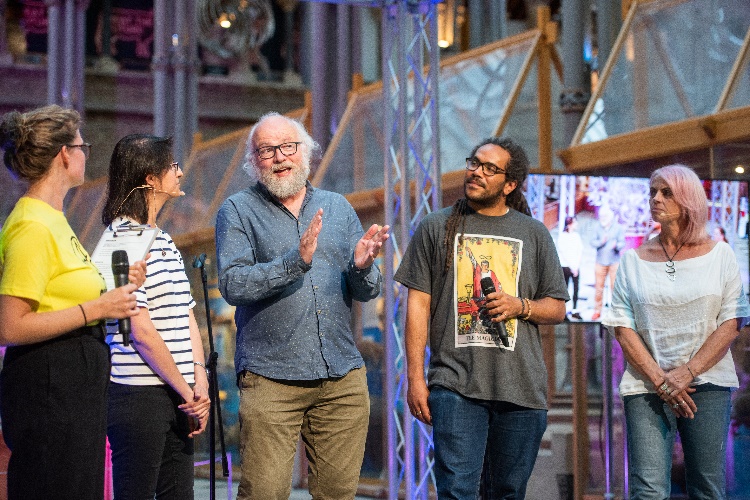
Figure 5 Science Together: Oxford Researchers and Communities (STORC). Credit: John Cairns.
In November 2019, Galaxy Zoo (part of the Zooniverse) was turned into an interactive light installation that went to Oxford’s Christmas Light Festival. Over 300 people participated, and 6,340 people passed by the area.
Chronicle was a collaborative community and researcher project from TORCH, connecting local communities, schools, and sound and light artists, who worked together over the course of a year to create a video that was mapped and projected onto the 950-year-old Oxford Castle. The final event had ~2,000 attendees, of which around 60% were a new audience.
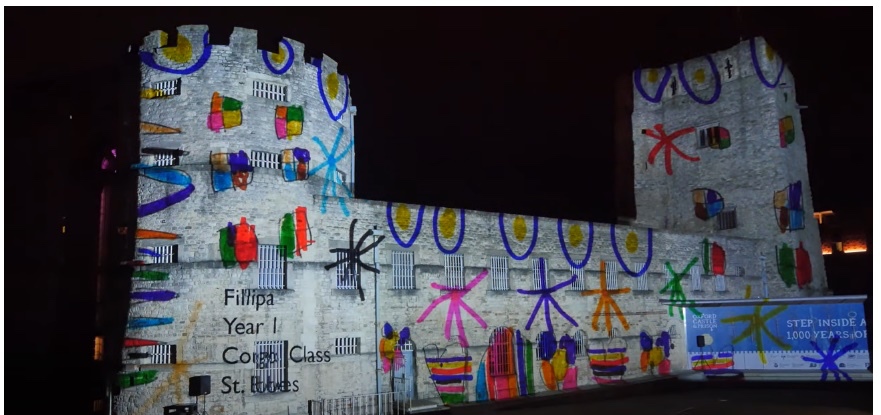
Figure 6 Oxford Castle at 950 Years – Son et Lumière
GLAM have developed mutually beneficial relationships with many community groups, e.g., Multaka-Oxford creates volunteering opportunities for people who have recently arrived in Oxford as forced migrants, while Activating the Archive is exploring the effect of British colonial rule on the landscapes and communities they controlled in countries such as Kenya and Nigeria.
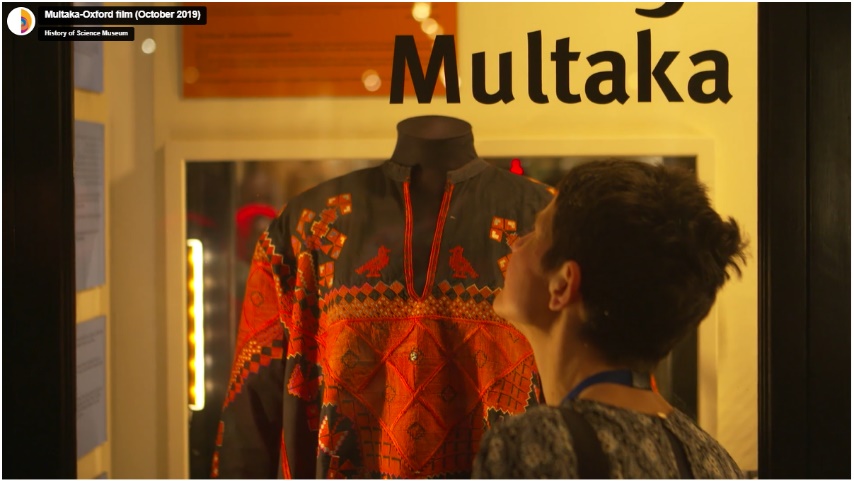
Figure 7 Multaka Oxford: Cultural meeting points for curious minds

Figure 8 Members of the local community with researchers from the Pitt Rivers Museum at Oxford City Farm, discussing how colonialism affected crops in East Africa and the way we eat today.
Beyond Boundaries is a science-inspired art competition that featured 18 Black, Asian and Minority Ethnic scientists and mathematicians to highlight their research to Oxfordshire schools and communities, receiving over 300 entries.
The Department for Continuing Education provides face-to-face and online educational opportunities for communities from a diverse range of backgrounds (18-95 years old from Oxfordshire and around the world), with 15,000 courses completed each year (1,000 public courses and 160 CPD courses on offer).
And, in contributing articles to The Conversation, 419 researchers and DPhil students have published 614 online articles, reaching over 31m readers globally, between 1 August 2019 and 31 July 2022.
The University also plays a vital role in fostering innovation and entrepreneurship to benefit its connected communities, for example:
Map the System is a global challenge established by the Skoll Centre for students to identify, deep dive into, and come up with ways of tackling social issues, in collaboration with the communities involved.
SOPHIA Oxford was formed by the University as a not-for-profit partner of Oxford Poverty and Human Development Initiative (OPHI) to enable businesses to incorporate key social indicators into sustainable business practices.
Moving in the right direction is a collaboration between the University’s Transport Studies Unit and the transport engineering firm Jacobs, which is brings together the worlds of academia and industry to address transport inequalities.
Oxford’s SDG Impact Lab is enabling our students to collaborate with businesses to tackle the UN Sustainable Development Goals.
Aspect 4: Enhancing practice
Evaluation is an established part of Oxford’s engagement programme. We support our researchers to evaluate their activity to understanding what worked well and what could be improved. However, as the existing PER strategy is oriented around internal capacity building, there is not an institution-wide approach to measuring the external impact of our engagement activities. We will address this important issue when we refresh our PCER strategy in 2023.
Evaluation training and support for staff and students is led by specialist evaluation facilitators. Evaluation toolkits and tailored evaluation support enable researchers to understand the difference made by their engagement activities. For example, the university’s PCER team worked with the Pitt Rivers Museum to evaluate the Traces of the Past exhibition in 2019-20.
Quantitative analysis of our engagement activities shows that, among other things:
We have awarded 180+ grants for public and community engagement through internal funding schemes whose outcomes and impacts include informed and inspired public audiences; upskilled researchers; changed perceptions; empowerment; shaped research direction; new partnerships and collaborations; and additional funding.
2,261+ researchers and PE professionals have taken part in the public engagement and evaluation training and building capacity programme.
The VC’s Innovation and Engagement Awards (49 entries; 8 award winners; 5 highly commended in 2022) increased recognition of the importance of public engagement, research innovation and policy engagement to the University.
Key outcomes and impacts of engagement activities
Below is an overview of the evaluation findings of a small selection of programmes and projects:
2 million volunteers worldwide have engaged in 234 Citizen Science projects on The Zooniverse. In addition to increasing the quality and impact of the research, public outcomes include learning, enrichment and educational aspirations. Wider societal outcomes include an improved disaster relief response; positive changes to environmental policy and enhanced teaching in schools.
In this period, Oxford Sparks created 137 videos, podcasts and ‘science at home’ livestreams, and worked with 121 researchers at all career stages. Oxford Sparks outputs have reached over 9 million, inspire audiences and increase research knowledge and understanding.
GLAM welcome over 3.3 million visitors each year to their six sites, to engage with the collections (8.4 million+ physical objects). Between 2019/20 and 2021/22 they produced 51 exhibitions and displays featuring Oxford’s research. The community engagement team partner with 40+ different community organisations including schools, prisons, refugee groups, and hospitals.
Aspect 5: Building on success
Reflecting on our journey
Our 2016 Strategic Plan set out a vision of public engagement that is embedded within Oxford’s research culture. To enable that, significant internal work was needed, including raising awareness of PER across the University, ensuring strong leadership of PER, and equipping staff with the necessary knowledge and tools. This work has yielded results: an established central PCER team now works with and across the Divisions and sets the institutional vision for PCER. Now that PCER is more embedded within Oxford, we will build out, thinking purposefully about the collective impact of our PCER activity and shifting the balance of activity to supporting even more engaged research.
Our recently convened PCER Advisory Board brings together expertise from academic and professional services staff to reflect on and steer our PCER work. This group builds on two previous groups, the Public Engagement with Research Advisory Group (PER AG, comprised of Divisional PER leads, shown in Figure 1) and the PER Academic Advisory Network (PER AAN, which enabled senior academics to support the university’s overarching PER work).
Communicating and acting on the results
Sharing successes, challenges and learning is part of our evaluation mindset. We reflect on these with respect to progress towards our objectives; inform the evolution of our engagement strategy; and improve the outcomes for the public, communities, researchers and students.
Participation of PCER professionals in key University Committees and other groups, ensures PCER is seen by influential stakeholders, raising awareness of the strategic importance of PER, the PER programmes taking place and their outcomes and impacts, and enabling feedback and insight.
Learning, findings and recommendations from evaluations of strategic programmes and engagement projects and activities (e.g., printed and online reports and resources; case studies) are shared through internal networks and with partners and externally with the wider community via various means. For example, engagement staff and researchers regularly participate in the NCCPE’s Engage Conference and other events and external networks.
The findings of the evaluations have revealed a wealth of outputs, outcomes and shared learning and have resulted in many changes to those programmes and activities that significantly improve their effectiveness and impact.
Note You are currently viewing the latest version of this narrative statement. View the previous version as published in previous iterations of the KEF (KEF1 and KEF2)